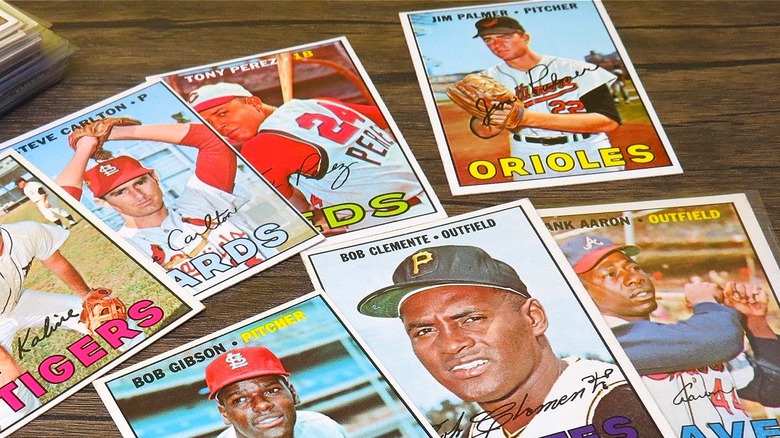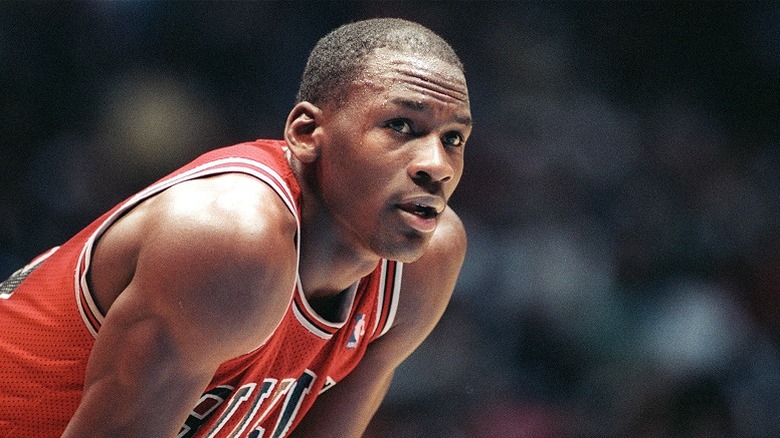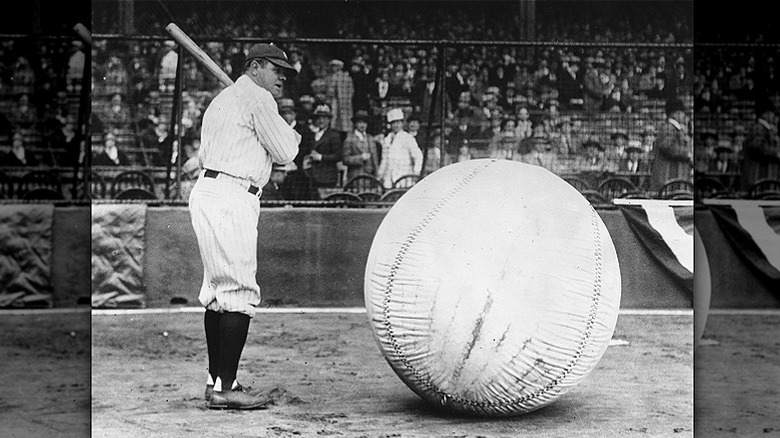Sports Collectibles Most Likely To Increase In Value With Time
It seems like you can never really know which items will fetch a collectible's fortune one day, and which will simply become dust collectors. For every Cabbage Patch Kid doll that's now worth a ton of money, there are five other '80s and '90s toy crazes long forgotten (rare Furbies notwithstanding). But in a sea of possibly valuable retro video game consoles, coins, comics, commemorative stamps, and Beanie Babies, there might be one GOAT collectible to rule them all: sports memorabilia.
Sports collectibles have been a market unto themselves for a hundred years and counting. Baseball alone enjoyed its first trading card (aka "cigarette card") in 1887. There's just something that sticks with sports harder and longer than with many other collectibles, and that's a love of the game. While some elder millennials love their childhood Beanie Baby collection to this day, the Beanie bubble did eventually burst. No matter what anyone says, part of that boom and bust seems traceable to children growing up and putting their love for soft cuddly cuties on the shelf. But, for better or worse, a love of sports over stuffed animals is usually a lifetime affair.
Stretch that love of the game across lifetimes, and you have the potential for a billion-dollar sports collectible industry. Sports memorabilia is an attractive investment for both small-fry and big-time investors — but how can you tell which sports collectibles will increase their value over time?
Sports memorabilia's story drives value
To appreciate sports memorabilia's ability to steadily grow in value, let's first look at why sports collectibles have been considered valuable for the last century. Yes, items must typically be in mint condition to fetch top dollar, but perhaps more than condition, the legend of the thing matters as much. They also need to be scarce to command attention.
Just like any great find that appears on the "Antiques Roadshow" or item being auctioned off at Sotheby's, a sports collectible is only as valuable as its provenance, or proof of ownership and authenticity, as traced through an object's history by a series of receipts and other documents. But when it comes to sports, part of memorabilia's provenance is the player or the game the object is connected to (e.g., Shohei Ohtani's 50-50 home run ball). The myth-making of sports infuses a fanatical value into items that many people can tap into, even if they're not a fanatic at all.
Let's pick on elder millennials again, for example. These people are at prime investing age now — and might have fond memories of Michael Jordan as a basketball star of their youth. Perhaps the wealthiest of these investors would spend big money on one of the last jerseys he ever wore for the Chicago Bulls in 1998, to tie themselves in some way to that sports history. How big of money are we talking? A cool $10.1 million in 2022. To quote the 1990s-era NBA Jam Tournament Edition, boom shakalaka!
Old rules for a new game
Old collecting rules apply for today's sports memorabilia market, even though prices can be out of the park and straight into next year. Public auctions see low millions paid for sports memorabilia with regularity these days, which is nothing to say of likely much higher prices being paid in private markets.
While sports memorabilia packs much the same nostalgic power it ever did, the players keep on changing, and new stories keep being told. Sports memorabilia is increasingly seen as an attractive alternative investment, and has been likened to the big-business art market by some analysts. While it can be wild to think of sports balls as literal investment strategy, certain investors certainly are.
To get in on the game, collectors must play the long game. Keep an eye on star players with great careers, who only seem to keep building. While it's a little anti-underdog a strategy, only betting on the best seems to be a smart strategy for getting your mitts on increasingly valuable collectible sports items. So might be keeping an eye out for oddball sports ephemera, like the world's greatest cast-off sandwich bags. Keep pristine items pristine, and game-worn items full of whatever Gatorade might have been dumped on them back in the day. Whatever star players wear or touch during a play that has the crowd so quiet that you can hear a penny drop will likely continue to be worth quite a few pennies as the season wears on.


